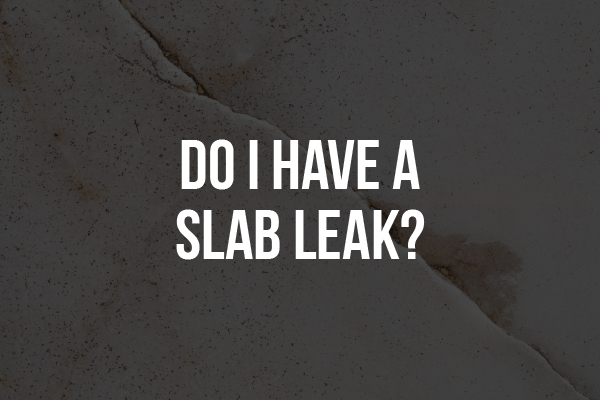
Table of contents
- What is a Slab Leak?
- What are the Signs of a Slab Leak?
- High Water Bills
- Sounds of Running Water When No Tap is Open
- Foundation Develops a Crack
- Discolors or Damp Floor Coverings
- Plank Popping or Floor Warping
- Warm or Damp Places on Floors
- Less Hot Water Available
- Bad Smell From Floors or Walls
- Damage to your Lawn Near the Foundation
- Visible Shift in the Soil Around the Structure
- Mold or Mildew Growth in a Basement or Near a Foundation
- Foundation Heaving
- How is a Slab Leak Repaired?
- FAQs
- Slab Leak Repair in McKinney Texas
- Slab Leak FAQS
- Additional Resources:
While a home that is built on a slab provides more protection against flooding than a home with a crawl space, it can be harder to detect when an under-slab pipe is leaking. Because of this, it is especially important to watch for the signs of a slab leak. Slab leaks can lead to major home damage, unsafe conditions, and costly repairs. In this blog post, Bewley Plumbing delves into what a slab leak is and some signs to look for to determine if you have one in your home.
Given the devastating nature of slab leaks, it is crucial to contact a reputable professional as soon as possible if you suspect you have one.
What is a Slab Leak?
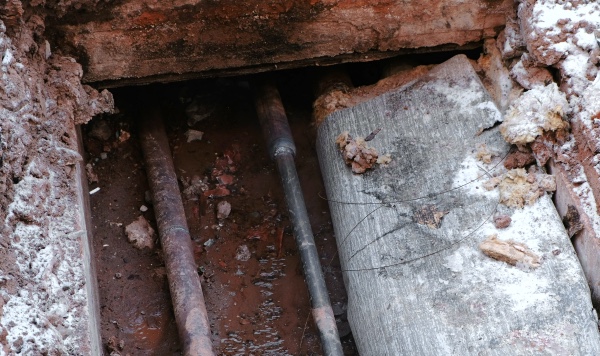
Many homes feature a slab foundation with pipes underneath it. If one of those pipes were to leak, it could lead to a significant amount of damage to your home, potentially creating mold and mildew, and other unsafe conditions.
What Causes a Slab Leak
A slab leak can be caused by a number of issues. In the following section, we detail several causes of a slab leak. Please note this list is not conclusive.
Soft Soils
Soft soil can lead to a slab leak. Texas soil poses a challenge to slab, as the soil in Texas is some of the most expansive in the United States. Soil expands when it becomes wet with rain water and contracts when it has dried out.
Types of Materials Used to Create the Plumbing
Some materials are more prone to deterioration than others. Often installed in older homes, copper pipes and orangeburg sewer pipes are susceptible to corrosion and cracking.
Soil that Shifts
Sifting soils, including those caused by erosion and earthquakes, can result in slab leaks.
Older Homes
Plumbing in older homes may have a large amount of pipe deterioration.
Water that is Acidic or Too Hard or Soft
Water with evaluated PH levels and or water that is too soft or hard can damage pipes.
What are the Signs of a Slab Leak?
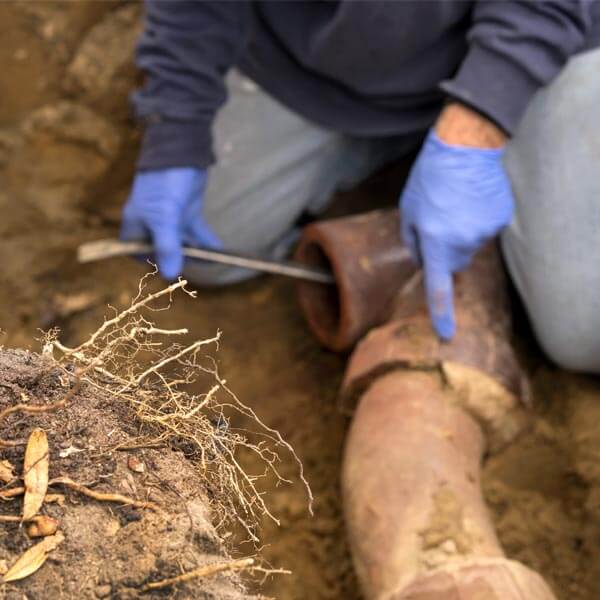
There are a number of signs to look for that can indicate a slab leak. However, these may not always be easy to see. Because of this, it is important that you are able to identify these signs.
In the following section, we’ve compiled a list of signs to look for. Please note this list is not conclusive.
High Water Bills
A slight water bill increase from spring to summer may be due to watering plants or lawns. However, a significant increase in your water bill is a sign you need to contact a plumber. It could be the result of a slab leak.
Sounds of Running Water When No Tap is Open
Hearing water running when all faucets are off is a good indicator of a slab leak.
Foundation Develops a Crack
Water can threaten your home’s integrity. Signs of water damage include cracks in floors and walls. This is an indication that a slab leak may be occurring.
Discolors or Damp Floor Coverings
Green, brown, or black stains on a carpet are signs you have water damage. Floor covers can become damp after leaking water has accumulated.
Plank Popping or Floor Warping
Dampness can be hard to detect in wood flooring due to its ability to absorb water. You may notice warping wood floors before you notice water. A significant, long-lasting leak can warp your flooring. It often occurs in the form of a raised area that resembles a “dome.” The raised area is not just a good sign of where the leak is coming from, but it’s also an indication of major foundation damage.
Warm or Damp Places on Floors
Often, a slab leak comes from a hot water line. A warm or damp area on a floor is a potential sign of a leaking hot water pipe. This happens when hot water leaks through the slab and up to the flooring.
Less Hot Water Available
If you notice a shortage of hot water, it could be due to trouble with your hot water heater, or a hot water pipe may have a leak.
Bad Smell From Floors or Walls
Mold or mildew gives off a foul smell. If you smell mold or mildew behind floors or walls, it could be a sign of a slab leak or another type of water leak.
Damage to your Lawn Near the Foundation
An indicator of a slab leak are parts of your yard that show damage or flooding that never seems to dry. Slab leaks can actually stem from underneath your yard, too—and this flowing of water upwards can create constantly flooding patches of grass. (This leads to dying patches of grass from it being flooded out, really wet soil or mud patches, and even a congregation of insects, such as mosquitos which will be attracted to the water.)
If not taken care of, slab leaks can also harm outdoor pools as more groundwater will push up on the pool’s structure, leading to cracks or it being pushed out of the ground.
Visible Shift in the Soil Around the Structure
As Texas’ clay soil can create problems for your foundation, you’ll want to maintain the soil-moisture levels. Gaps between the foundation and soil are an indication of a problem, while no gap is a sign of a good moisture level.
In the event of a gap between your soil and foundation, there are several tips to be mindful of:
- Keep the rainwater that falls from your roof to the foundation at a minimum.
- Utilize rain gutters and downspout extensions to send water into the yard and away from the foundation. It must be at least three feet away, as that is the minimum safe distance.
- Maintain clean gutters to prevent overflow.
- When the weather is hot and dry, water the foundation to maintain soil moisture. Please check your area’s draught and water rules to learn what slab watering you can do.
- If you have a sprinkler system, have it water the foundation to maintain a proper moisture level. Please make sure that it is done legally by checking the rules in your area.
- If you don’t have a sprinkler system, you can utilize a soaker hose with an automatic timer.
Mold or Mildew Growth in a Basement or Near a Foundation
If water becomes trapped, it can cause mold or mildew. Mold or mildew is a serious problem and can also be an indication that you have a slab leak.
Foundation Heaving
Extreme foundation swelling may lift your home a little bit. This phenomenon is known as heaving. In the event this happens to your home, it is crucial that you get it repaired by a professional as soon as possible. If a building’s foundation undergoes a sudden, major shift, it can cause severe and even irreparable damage to a building.
How is a Slab Leak Repaired?
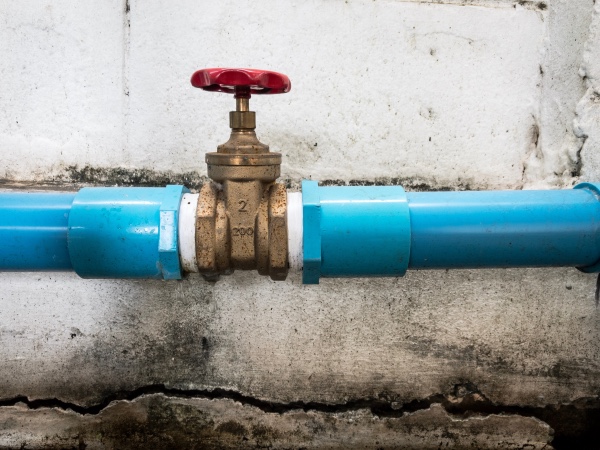
A slab leak may be repaired in a number of ways. Different situations may call for different repairs.
Trenchless Repair
Trenchless repair involves sealing broken pipes with epoxy pipe liners. This is the most popular method of slab leak repair.
Pipe Rerouting
Second to trenchless repair in popularity, pipe rerouting involves creating new entry and exit points for existing pipes. The leaking pipes are removed from the system. This is a more cost-effective repair method.
Pipe Repair
Pipe repair can involve patching, replacing part of the pipe, adding a liner, or something else to repair a damaged or leaking pipe.
Slap Replacement
In extreme cases, a slab leak repair would entail demolishing and replacing the entire slab. This may be done if the pipes are in bad condition or a water leak has caused a lot of damage.
FAQs
Slab Leak Repair in McKinney Texas
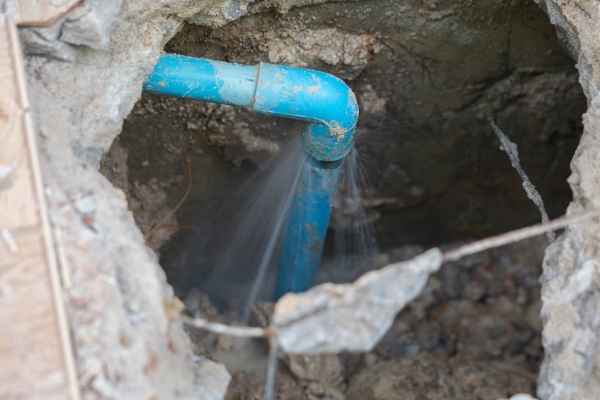
A slab leak is not something you want to wait to get repaired. If you suspect you have it, contact a plumbing professional immediately. If you are in Collin County or Denton County, Texas, the experts at Bewley Plumbing can help you. We proudly serve residential and commercial clients.
Bewley Plumbing has won multiple awards and has been given many five-star reviews from satisfied customers. We also offer senior citizen, teacher, and military discounts.
Please contact us to request service.
Slab Leak FAQS
Homeowner’s insurance may cover slab leaks. However, it would depend on the particular policy. If you have questions, please contact your policyholder.
There are steps you can take to reduce the likelihood of a slab leak. However, you won’t be able to entirely prevent one. The piping that goes under the slab (usually copper piping) is prone to deterioration and “pinhole” leaks.
In the following section are several actions you can take to reduce the chances of a slab leak. Please note that there are more ways than this.
1. Avoid Using Chemical Drain Cleaners: Chemical drain cleaners are caustic and damage pipes.
2. Take Steps Against Hard Water: Hard water can damage pipes.
3. Maintenance: Have a qualified plumber conduct periodic maintenance.
4. Make sure your pipes have adequate water pressure: Low water pressure may result in plumbing problems and small cracks or leaks to grow.
5. Fix small leaks before they become big problems: A small leak can become bigger over time, leading to major problems.
6. Properly winterize your home.



